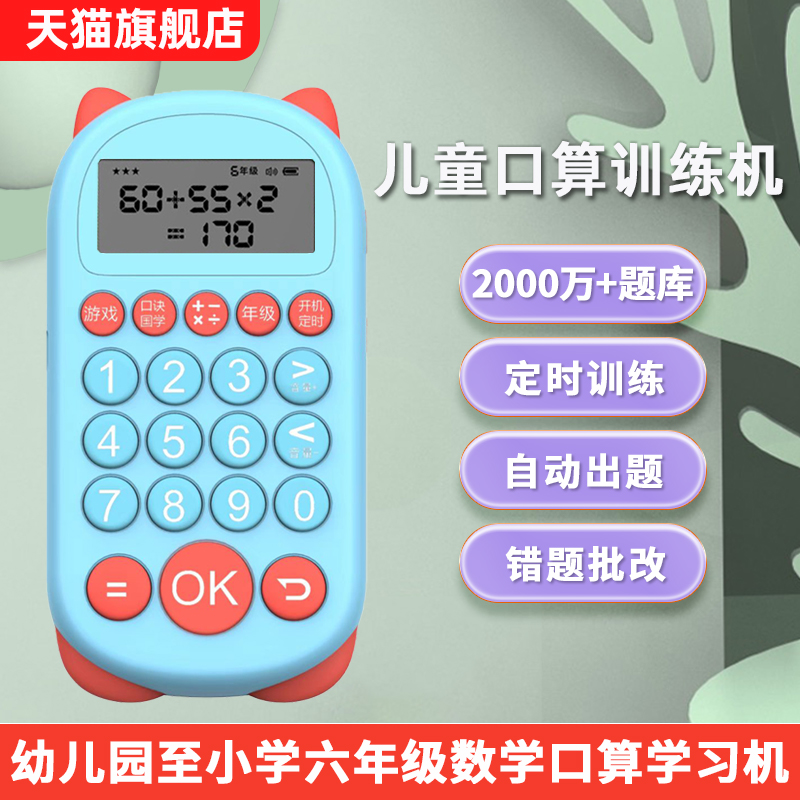学习用品与口算机的搭配使用指南
峎迥匞
2024-10-11 10:45:00
0次
学习用品与口算机的搭配使用指南
一、引言
在现今的数字化时代,学习用品与电子设备的结合已经成为了提升学习效率和效果的重要手段。口算机作为一款便捷的电子工具,已经逐渐融入了学生的学习生活。为了帮助学生们更好地使用学习用品与口算机,本文将详细介绍其搭配使用指南。
二、学习用品的选择
1. 笔和纸:笔和纸是学习的基础工具,适用于书写、绘画和练习等。在选择时,应考虑纸张的质量和笔的书写流畅度。
2. 笔记本:根据不同的学习需求,选择合适的笔记本,如草稿本、作业本、错题本等。
3. 尺子、圆规等绘图工具:对于需要绘制图形的学习任务,如数学、物理等,这些工具是必不可少的。
三、口算机的使用
口算机是一款集成了口算练习、速算练习、题目解析等功能的电子设备。其操作简单,功能丰富,是学生们进行数学学习的得力助手。
1. 口算练习:通过口算机进行口算练习,可以帮助学生提高计算速度和准确性。
2. 速算练习:口算机可以帮助学生进行速算练习,锻炼学生的快速反应能力。
3. 题目解析:当学生遇到难题时,口算机可以提供详细的题目解析,帮助学生理解题目并掌握解题方法。
四、学习用品与口算机的搭配使用
1. 结合使用:在学习过程中,可以将笔和纸与口算机结合使用。例如,在草稿纸上进行计算练习时,可以使用口算机进行核对和答案解析。
2. 笔记本记录:将口算机的练习结果和解析记录在笔记本中,方便学生进行复习和总结。
3. 绘图工具辅助:对于需要绘制图形的学习任务,可以使用尺子、圆规等绘图工具辅助完成,再利用口算机进行相关计算和解析。
五、注意事项
1. 合理使用:虽然口算机功能强大,但仍然需要合理使用,避免过度依赖。
2. 保护眼睛:使用电子设备时,要注意保护眼睛,适当休息和放松。
3. 维护设备:定期对口算机进行维护和保养,确保其正常运行。
六、总结
通过以上介绍,我们了解了学习用品与口算机的搭配使用方法。在学习过程中,合理使用这些工具可以提高学习效率和效果。希望本文的指南能够帮助学生们更好地利用学习用品和口算机进行学习。
(以下为英文翻译)
Learning Tools and Calculator Combination Usage Guide
I. Introduction
In today's digital age, the combination of learning tools and electronic devices has become an important means to improve learning efficiency and effectiveness. As a convenient electronic tool, the calculator has gradually integrated into students' learning lives. To help students better use learning tools and calculators, this article will introduce a detailed guide for their combined use.
II. Selection of Learning Tools
1. Pens and paper: Pens and paper are the basic tools for learning, suitable for writing, drawing, and practicing. When selecting, consider the quality of the paper and the smoothness of the pen's writing.
2. Notebooks: Choose suitable notebooks according to different learning needs, such as scratch paper, homework notebooks, and error notebooks. 3. Drawing tools such as rulers and compasses: These tools are essential for learning tasks that require drawing graphs, such as mathematics, physics, etc. III. Calculator Usage The calculator is an electronic device that integrates functions such as mental arithmetic practice, speed arithmetic practice, and problem analysis. Its simple operation and rich functions make it a powerful assistant for students to learn mathematics. 1. Mental Arithmetic Practice: Use the calculator for mental arithmetic practice to help students improve their calculation speed and accuracy. 2. Speed Arithmetic Practice: The calculator can help students practice speed arithmetic and develop their rapid response ability. 3. Problem Analysis: When students encounter difficult problems, the calculator can provide detailed problem analysis to help them understand the problems and master problem-solving methods. IV. Combination of Learning Tools and Calculators 1. Combining Use: In the learning process, you can combine the use of pens and paper with the calculator. For example, when practicing calculations on scrap paper, you can use the calculator to check and analyze the answers. 2. Notebook Recording: Record the results and analysis of the calculator's practice in a notebook for easy review and summary by students.3. Use of Drawing Tools: For learning tasks that require drawing graphs, use drawing tools such as rulers and compasses to assist in completion,
上一篇:口算机操作技巧:轻松应对数学难题
相关内容
热门资讯
儿童学习必备:多功能口算机使用...
本文介绍儿童学习必备的多功能口算机使用指南,包括启动与界面认识、基础口算练习、自定义题目与模式、计时...
学习路上,我们伴你而行——口算...
口算机是提高计算速度和准确性的工具,本文介绍了其基本认识、使用前的准备、操作步骤、技巧及注意事项。通...
口算机——你数学学习的得力助手
口算机是数学学习的得力助手,具有快速准确、操作简便等优势。它能辅助记忆数学公式,提高学习效率。在数学...
创新学习用品:口算机功能全面解...
本文详细解析了口算机的功能,包括基本计算、智能学习、互动学习及附加功能。口算机不仅可进行数学运算,还...
口算机——孩子的数学学习小助手
数字化时代下,口算机作为儿童数学学习小助手,集互动教学、个性化学习等特点于一身,可帮助孩子巩固基础、...
学习神器大揭秘:多功能口算机与...
多功能口算机:高效学习助手,快速计算,多种学习模式,个性化定制,智能纠错,助力学习旅程。可提升效率,...
口算机使用技巧:提升学习效率的...
本文介绍了使用口算机提升学习效率的技巧,包括熟悉基本操作、制定练习计划、多样化练习题目、注意错误和与...
学习必备工具:精选的几种口算机...
本文介绍了三款精选口算机产品,包括小明口算机、智慧星口算机和数学小能手口算机,它们分别适合不同年龄段...
学习新助手——多功能口算机的选...
本文提供了多功能口算机的选购指南,包括明确需求、功能特点、品牌与价格、硬件配置及售后服务等,帮助您在...
选购指南:最适合孩子的口算机学...
选购指南:为孩子选择最适合的口算机学习工具,需考虑年龄阶段、功能特点、品牌质量及价格等因素。知名品牌...



